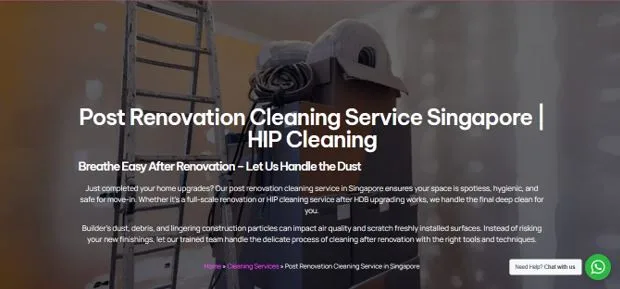Managing the Recruitment Supply Chain: Why Companies Use Multiple Agencies for Contract Labor
In today’s dynamic labor market, companies face increasing pressure to remain agile and competitive. To keep pace with evolving demands, many businesses lean heavily on contract labor to fill skill gaps, support project work, and scale operations efficiently. But with this demand comes complexity—particularly in how organizations source their temporary workforce. Most enterprises end up working with a multitude of recruitment agencies, believing this gives them access to a broader talent pool. While this strategy has its perks, it can also lead to significant inefficiencies and hidden costs.
If your business is juggling relationships with numerous staffing providers, you’re not alone. But is this really the best approach? More importantly, how can you take back control of your agency supply chain and ensure it works for you—not against you?
Let’s explore the reality behind multi-agency dependency and what companies can do to optimize their contingent workforce strategy.
The Allure of Multi-Agency Sourcing
Working with several recruitment agencies seems like a logical move. The more partners you have, the greater your reach, right? That’s the common assumption. And to some extent, it holds true. Different agencies may specialize in specific industries, job types, or geographic regions, which can help diversify your candidate pipeline.
Some other perceived benefits of this approach include:
- Speed to fill: Multiple agencies competing for roles can mean faster placements.
- Reduced risk of exclusivity: If one agency fails to deliver, others might step in.
- Flexibility: Each agency might offer different pricing models, contract terms, or service levels.
However, these benefits come at a cost—often one that isn’t visible until it starts affecting your bottom line.
The Downsides of an Unmanaged Supply Chain
Without a central strategy to manage all agency relationships, things can spiral quickly. Here are some of the most common problems companies face:
1. Inconsistent Candidate Quality
With multiple agencies sourcing independently, quality can vary widely. Without a standardized vetting or onboarding process, companies often receive candidates with differing skill levels, qualifications, or cultural fit.
2. Lack of Visibility
Do you know how many contract workers you have, where they’re from, or how much you’re spending per agency? Fragmented agency relationships often lead to a lack of transparency in hiring data, rates, and performance metrics.
3. Duplicate Submissions
It’s not uncommon for two agencies to submit the same candidate. Not only does this waste time, but it can also create legal or ethical issues—especially if your business isn’t clear on ownership or exclusivity.
4. Increased Administrative Burden
Managing multiple points of contact, different invoices, contract types, and compliance standards can overwhelm internal HR and procurement teams.
5. Hidden Costs
When there’s no consolidated overview, businesses often overpay for talent. Agencies may offer inconsistent rates, apply markups liberally, or fail to deliver competitive value.
Why It’s Time to Take Back Control of Your Agency Supply Chain
The phrase “agency supply chain” may sound like a logistics term, but it’s becoming increasingly relevant in the workforce space. Just as companies streamline their physical supply chains to reduce costs and improve efficiency, they must now do the same with their recruitment supply chain.
So, how can you achieve this?
The key lies in centralization, standardization, and strategic oversight. Here’s what that looks like:
1. Consolidate Vendors
Instead of working with dozens of agencies, reduce your roster to a select few trusted partners. Choose those that consistently deliver high-quality candidates, understand your business, and align with your values. Consider implementing a Preferred Supplier List (PSL) with clear performance metrics.
2. Use Vendor Management Systems (VMS)
A VMS is a powerful tool to bring all agency activity under one platform. It offers a single source of truth for candidate submissions, rate cards, timesheets, compliance checks, and overall spend.
3. Set Clear KPIs and SLAs
Establish expectations with your agencies. Track metrics like time-to-fill, candidate quality, interview-to-hire ratios, and contractor performance. When you set the standards, agencies are more likely to align with your needs.
4. Implement a Master Vendor or MSP Model
Under a Master Vendor arrangement, one agency takes primary responsibility for filling roles and managing sub-vendors. A Managed Service Provider (MSP) goes a step further, acting as a third-party manager of all agency relationships. These models increase control and reduce chaos.
5. Audit Regularly
Review your agency performance and spending data frequently. Identify underperformers, renegotiate rates, and eliminate redundancies. Periodic audits help you maintain control and maximize ROI.
The Future of Workforce Management: Strategic, Not Scattered
As workforce trends evolve—driven by digitization, remote work, and the gig economy—the way organizations manage contract labor must also evolve. Today’s leading companies treat their recruitment supply chain as a strategic asset, not an operational afterthought.
By doing so, they gain:
- Better talent quality
- Faster fill times
- More consistent contractor experiences
- Lower costs
- Greater compliance and reduced risk
The chaotic “more is better” approach to agency partnerships is no longer sustainable. Centralizing and controlling your agency relationships leads to smarter, faster, and more effective workforce solutions.
Ready to Take the Next Step?
If you’re feeling the strain of fragmented agency relationships and ballooning contractor costs, now is the time to act. Whether through internal reforms or external support from workforce solutions providers, the goal should be the same: take back control of your agency supply chain and transform it into a lean, efficient, and strategic part of your business.
Conclusion
In a world where agility is everything, your approach to contract labor sourcing can be a game-changer—or a hidden liability. Relying on multiple recruitment agencies might seem like a smart way to cover all your bases, but without proper management, it can lead to chaos, cost, and complexity. Streamlining your agency supply chain isn’t just a best practice—it’s a business imperative.





